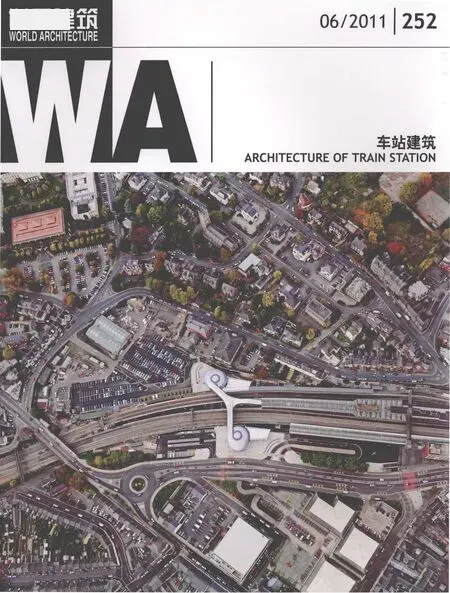M2地铁站,洛桑,瑞士
建筑设计:伯纳德·屈米建筑师事务所,M+V梅里尼和温图拉建筑师事务所
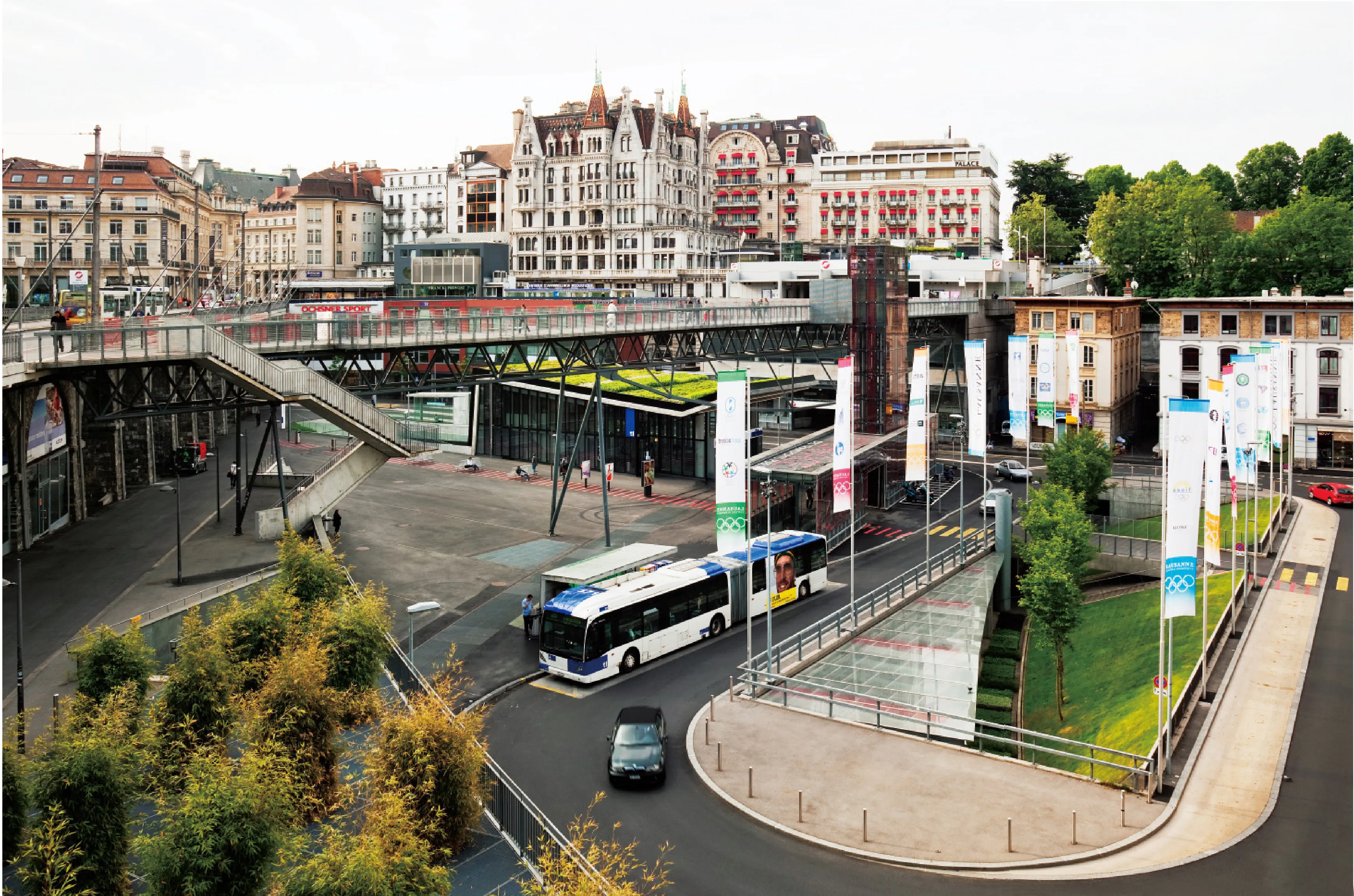
1 车站全景/General view(摄影/Photo: Peter Mauss/Esto)
地面部分
M2交通枢纽站的筹划建设历时长久,经过3期不同的工程。1990年代初期,伯纳德·屈米建筑师事务所与卢卡·梅里尼共同参加了弗隆河谷再开发项目的设计竞赛,在他们的“桥—城市”方案中设计了一系列凌驾弗隆河谷地区上空并有居住功能的桥。当弗隆河谷的再开发计划最终因资金不足而遭搁置时,当地的交通主管部门却找到了伯纳德·屈米、M+V卢卡·梅里尼和伊曼纽尔·温图拉建筑师事务所,邀请他们共同设计一座新的换乘车站。车站的一期工程于2001年竣工,建设内容包括一座以红色印刷玻璃为主要特征的轻轨站、一座新的人行天桥,以及若干通道,用于连接位于欧洲广场附近的弗隆河谷地区。
二期工程的任务则包括在建成的交通枢纽综合体中新增一处售票点、安装若干扶手电梯及增设一座地铁站。二期工程新建筑的设计特点鲜明,覆盖着绿色屋顶的混凝土板折叠的外观令人瞩目,还有一条长长的人行步道。在满足设计任务的同时,这座建筑也进一步向西延伸了一期工程的空间,在城市的中心地带形成了更多的交通换乘节点。
作为换乘站的主要售票处,这座建筑需要传达出换乘站管理处的公众形象和更广泛意义上的城市形象。设计方案的主要表现因素是折叠状的混凝土板,看起来犹如广场上的一小片地面被翻折起来,又向背后弯折,由此形成了东侧的售票处和西侧通往地下层的人行步道。这种突然断裂和折叠的设计手法是对洛桑所处地形及其所在阿尔卑斯山脉历史地貌的一种追忆。屋顶和西侧的墙体表面为大片的植被绿毯所覆盖,除了能够体现出业主对环境保护的关注之外(包括采用了瑞士能源标准——与美国绿色建筑认证类似的评价体系),它同时也衔接了一期工程与二期工程的空间。方案还设计了一处椭圆形的下沉空间,其中包含一条狭长的景观带,由此为地下轻轨引入了自然光线。建筑内部也设有一些交通管理部门的办公室,设计上兼顾了私密性和自然采光。
折叠的设计策略满足了项目的设计要求:主要的结构表现力体现在混凝土板上,它看起来犹如广场表面被切走的一小块又复折回,掀起的“薄片”侧面覆以玻璃。这座建筑以坚固的工业材料建造,细部设计也与主要换乘枢纽的大规模交通流量相称。
地下部分
欧洲广场的下方正是新建的M2地铁与LEB(洛桑-埃沙朗-贝尔谢)通勤铁路的交汇点,与之毗邻的M1地铁也汇合于此。各条区域铁路线与公交线路分布在临近的交通设施中。规划中的有轨电车也正处于研究阶段,该地段对洛桑市交通运输基础设施的意义也由此变得更为重要了。因此,车站地下部分的规划也与地面部分一样,必须进行精心设计。
我们开始对地下车站的构想产生了浓厚的兴趣,因为它与这座城市丰富的空间层次密切相关。洛桑是一座建立在阿尔卑斯山脉中一处坡地上的城市,这里的地形和尺度一直以来都是城市格局的形成因素。新的转乘枢纽站把多层次的交通协调在一起,成为这座城市立体派风格的图示,桥梁、房屋、街道和阿尔卑斯的地平线都十分自然地融为一体。乘客穿梭在桥梁、台阶、人工坡道、观光电梯以及各节列车之间,所见景象随之频繁变化。我们把这种移动中的变化视为设计契机,因为,在这片激动人心的地段上所进行的建设项目几乎仅与移动有关。
项目需要在一条地下河道的上方铺设新的轨道交通,这条河道正是弗隆河谷得以命名的由来。从本质上说,设计的核心是如何在这条古老河流的上方重建城市的交通设施和重布城市的交通线路,以便使这座城市的每个空间层面都能更好地承载交通运输功能;而如何将位于地段上空的贝莱尔社区与位于方案地面层的弗隆工业区相联系则尤其重要。由于一期工程与二期工程几乎相隔10年才建成,要实现这些交通方式之间的协调布局需要以建筑学的视角来理解城市,因为随着时间的推进、不同交通条件与交通需求的变化,城市也将不断演变。
行人、小汽车、公交车和列车的交通流形成了一幅移动的图景,恰好能描绘出方案的设计构想。在那些留白的空间里,则将有一些城市中不期而遇的片段之景。所有这些要素相互交织,共同形成了三维的城市联络网,这也正是竞赛伊始我们就一直秉承的设计核心。□(徐知兰 译)
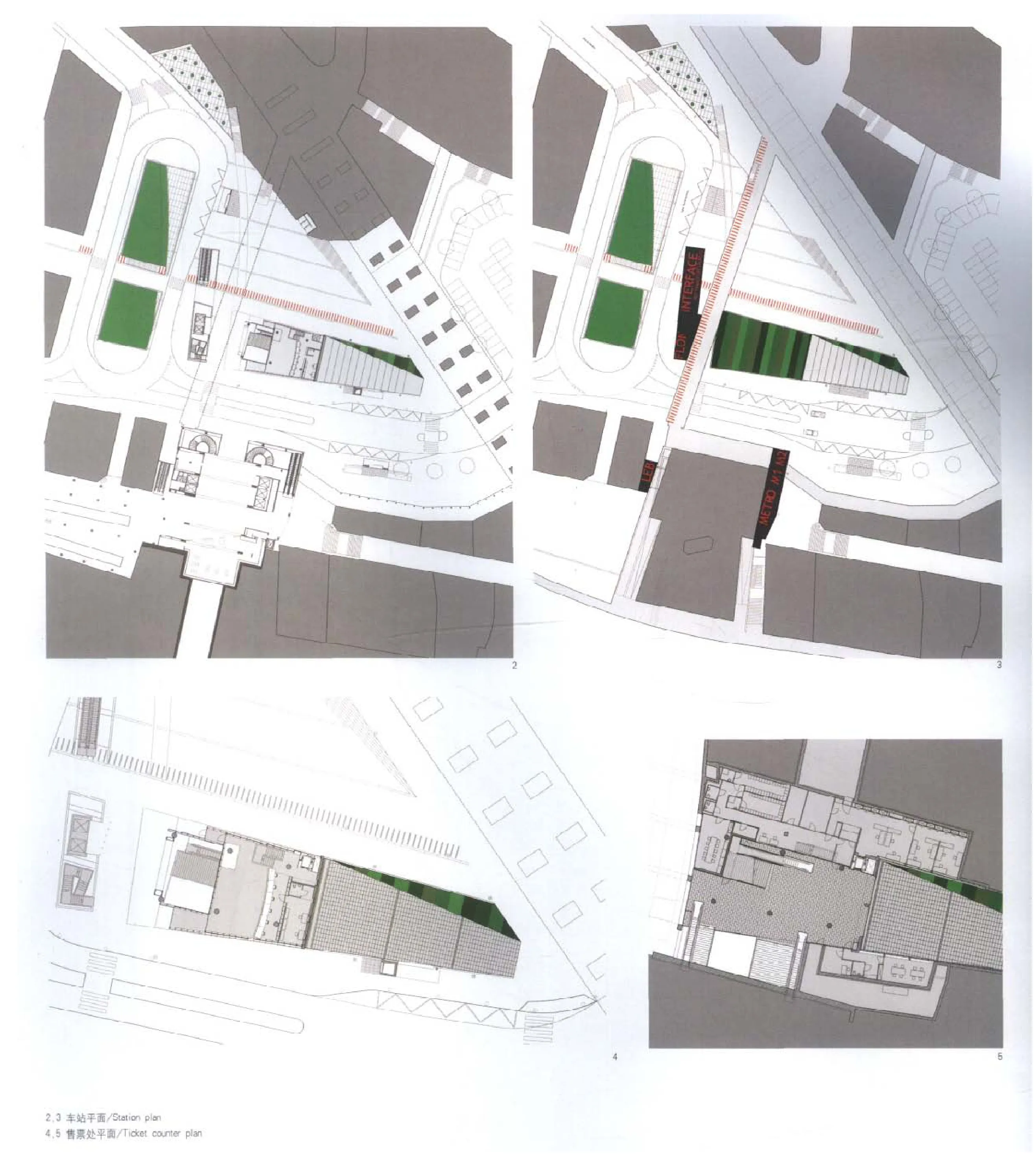

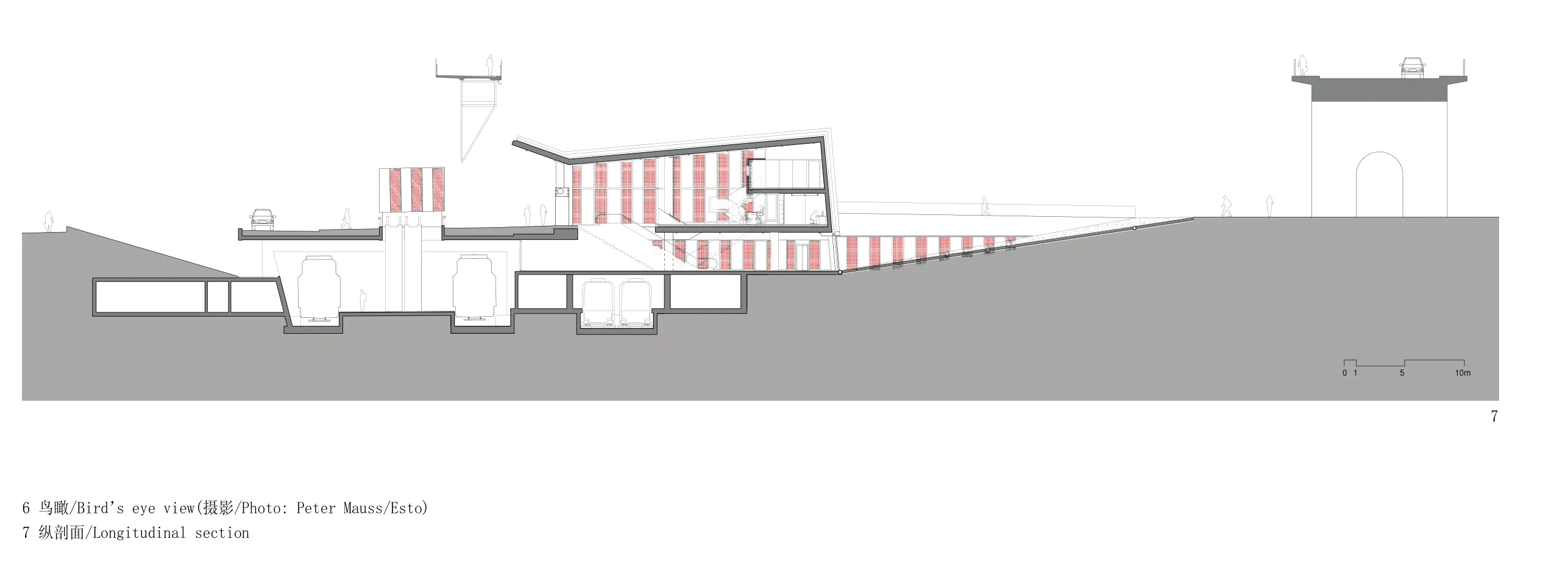


Above Ground
The M2 Transit Hub has had a long incubation period marked by three distinct phases. In the early 1990s,Bernard Tschumi Architects/Luca Merlini submitted a competition for the redevelopment of the Flon Valley. The“Bridge-City”scheme included a series of inhabited bridges over the Flon Valley.While the redevelopment of the valley lapsed without funding, local transit authorities approached Bernard Tschumi and M + V Luca Merlini & Emmanuel Ventura for the design of a new Transit Station,the first phase of which was completed in 2001, a light rail station characterized by red printed glass,a new pedestrian bridge, and connections to the valley at the Place de l’Europe.
The second phase was to incorporate a ticket counter, escalators, and a subway station as part of the transit hub complex. The new building, which features a dramatic concrete fold covered with a green roof, and a long pedestrian ramp, addresses these programs while expanding the first phase to the west, creating further transit connections at the heart of the city.
As the main ticket office for TL, the building needed to convey a public image for the transit authority and the city at large. The main gesture of the project is the folded concrete, which acts as though a strip of the plaza has been folded and bent back on itself to accommodate a ticket office to the east, and a pedestrian ramp to the subterranean level on the west. The rupture and folds are reminiscent of the topography of Lausanne and the geological history of the Alps. The roof and west wall are covered in a green carpet of plantings,which addresses environmental concerns of the client (including the Minergie Standard—similar to a LEED rating), but also links the second phase with the first phase, which incorporates a landscaped berm into a sunken oval, opening the subterranean light rail to natural daylight. The building also houses some offices for the transportation authority,which have both privacy and natural light.
The program was resolved using the strategy of the fold: the main structural gesture is in concrete,as though a piece of the plaza has been cut away and raised back on itself, with the sides of the“slice” faced in glass.The building is treated with sturdy, industrial materials and details suited to the heavy traffic of a major transit center.
Below Ground
Under the Place de l’Europe, the new M2 subway intersects with the LEB(Lausanne-Echallens-Bercher) commuter rail line, and the adjoining M1 subway. Regional rail lines and busses are located in adjoining facilities. With planned trolleys under study, the site is poised to become even more significant to Lausanne’s transit infrastructure, and planning had to be as deliberate below ground as above.
We became interested in the idea of an underground station as it related to the thickness of the city. Lausanne is a city built on a sloping hillside in the midst of the alps, and this topography and scale has always shaped the city. The new transit hub appropriates the multiple levels of traffic as a cubist diagram of the city, where bridges,houses, streets, and Alpine horizons fit together naturally. The constant shifts in perspective as a visitor traverses the bridges, stairs, ramps, glass elevators, and on the trains themselves were viewed as a design opportunity on this dramatic site with a program that is almost exclusively related to movement.
The project required creating the new rail lines above a subterranean river, which gives the valley its name. In essence, the project is about recreating and re-routing urban flows above this ancient river,to better accommodate traffic at every level of the city; in particular linking the Bel-air neighborhood above, and the industrial Flon district at ground level of the project. Given that the first and second phase were to be completed nearly ten years apart,the orchestration of these movements required architectural perspective of the city as it would evolve over time with different transit conditions and needs.
The flows of pedestrians, cars, busses, and trains create a movement diagram that describes the project. In the leftover spaces, there are moments of unexpected perspective on the city.Together, these form a three-dimensional urban connective tissue that is at the heart of the project ever since the initial competition.□
设计团队/Team: Joel Rutten, Christopher Lee, Rémy Cointet, Adam Dayem, William Feuerman, Yang Yang, Angie Co (New York), Nicolas Badin, Sarah Caperos, Didier Castelli, Bastien Colliard, Selva Demiaux, Célien Devaux, Julie Devayes, Damaris Gaudard, Raphael Gogniat, Eliane Goncalves, Laure Hofmann-Bertsché, Nam le Toan, Mathieu Olsommer,Stéphane Roch, Bernadette Rochat (Lausanne)
景观建筑师/Landscape Architect: Jean-Jacques Borgeaud, Lausanne
市政工程/Civil Engineers: MPAIC et CSD, Lausanne业主/Client: Métro Lausanne Ouchy sa, Transports Lausannois, City of Lausanne
设计任务/Program: TL售票处(420m2)和M2弗隆中心区出入口站及其交通运输管理办公室/TL Ticket Office (420m2) and access station M2-Flon Centre with Transit Authority offices
日程/Schedule:
委托/Won Commission: 1999
施工/Construction: 2004-2008
预算/Budget: 1 000万瑞士法郎/10mio CHF
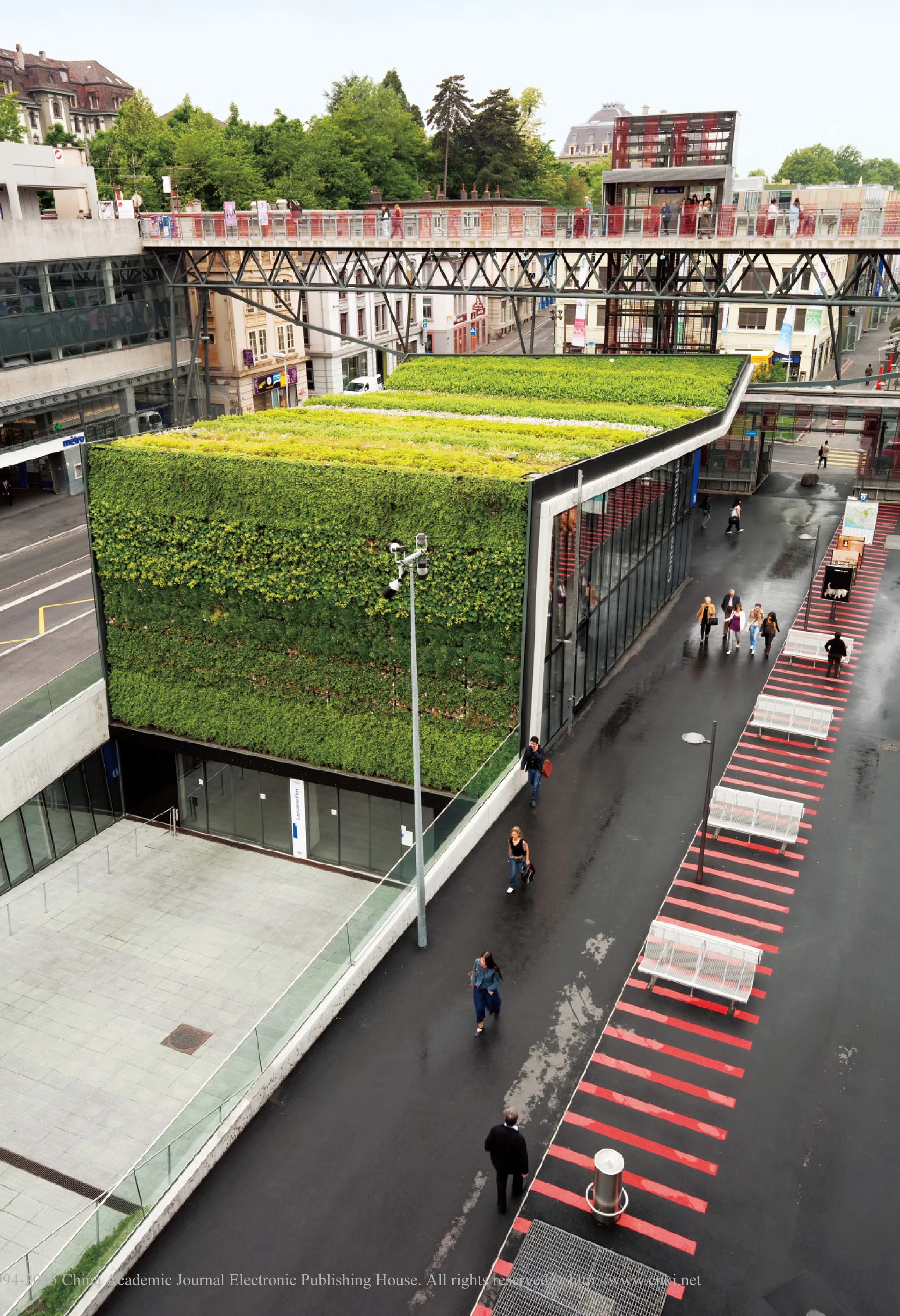
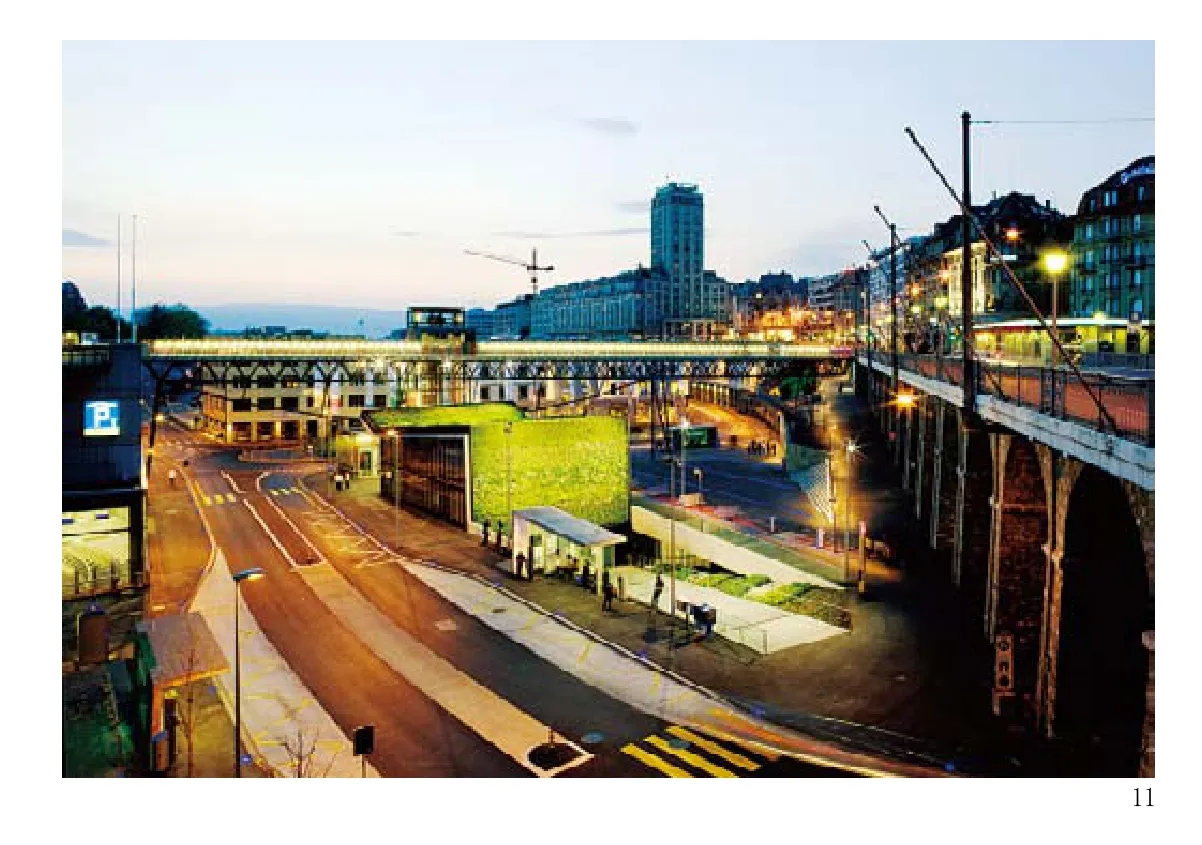


10 外景/Exterior veiw(摄影/Photo: Peter Mauss/Esto)
11 夜景/Night view(摄影/Photo: Yves Andre)
12.13 剖面细部/Section detail

